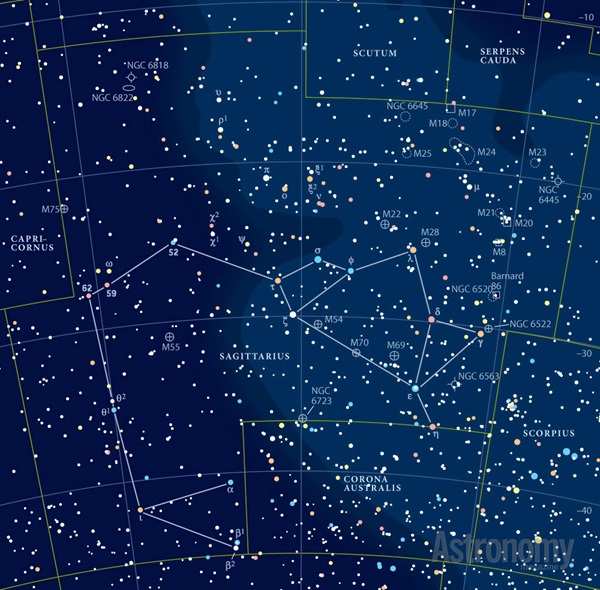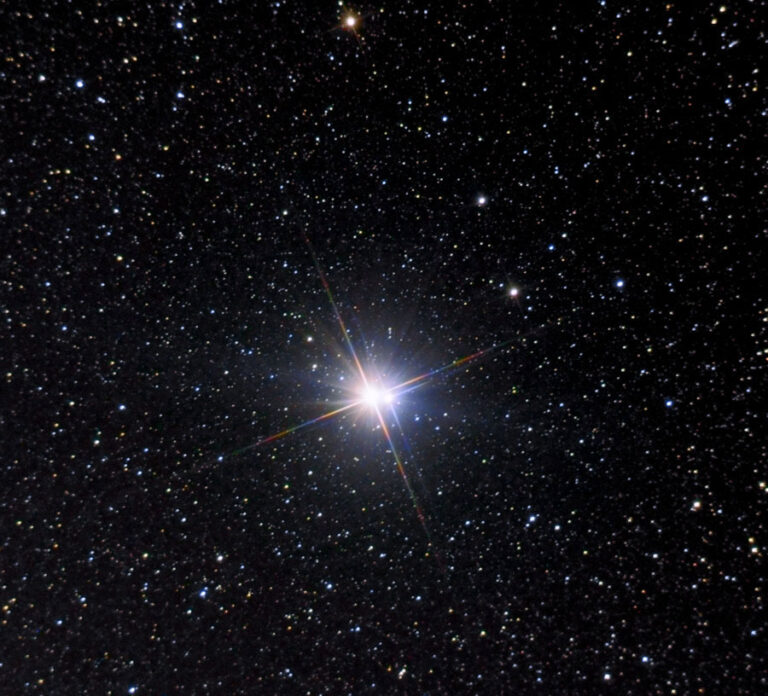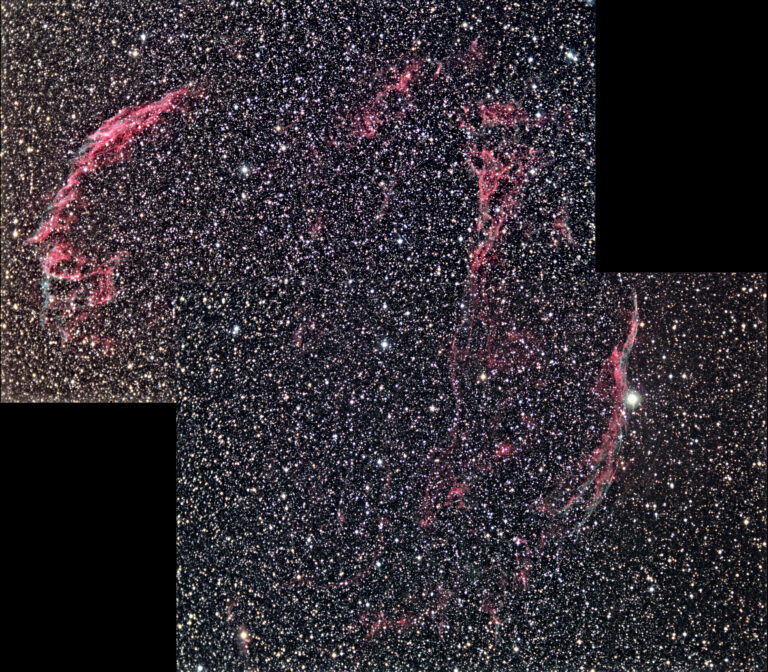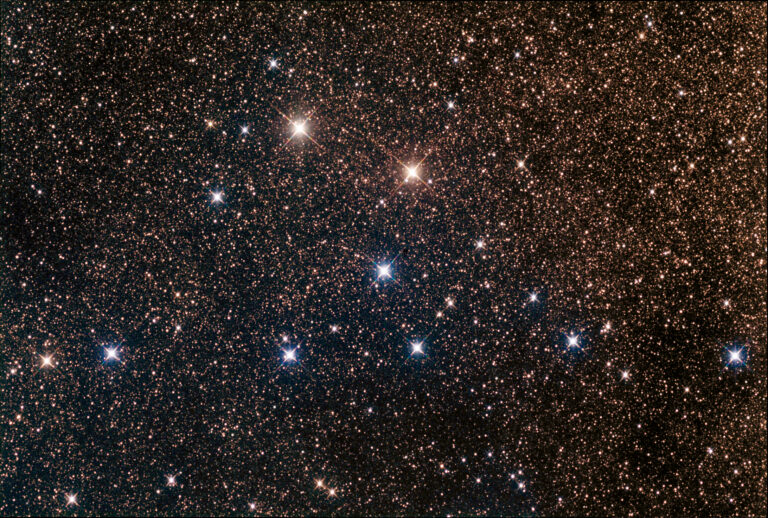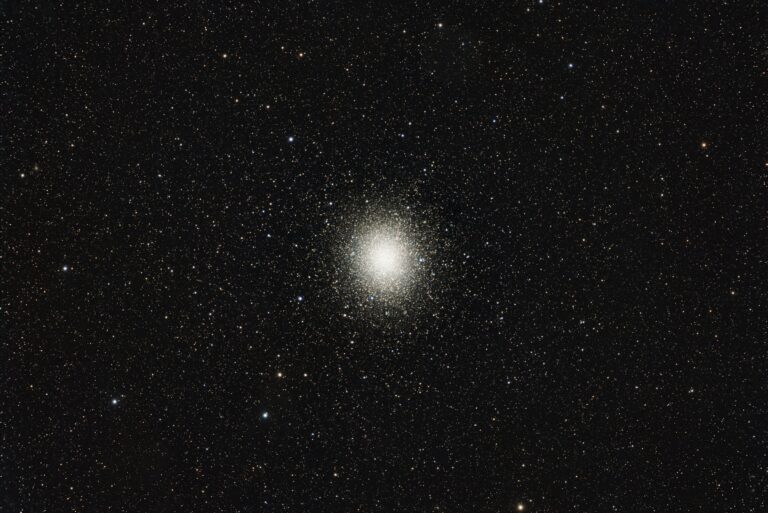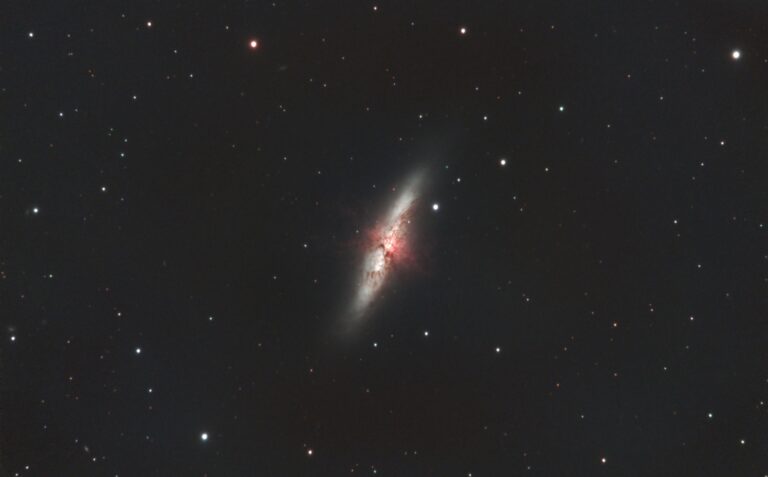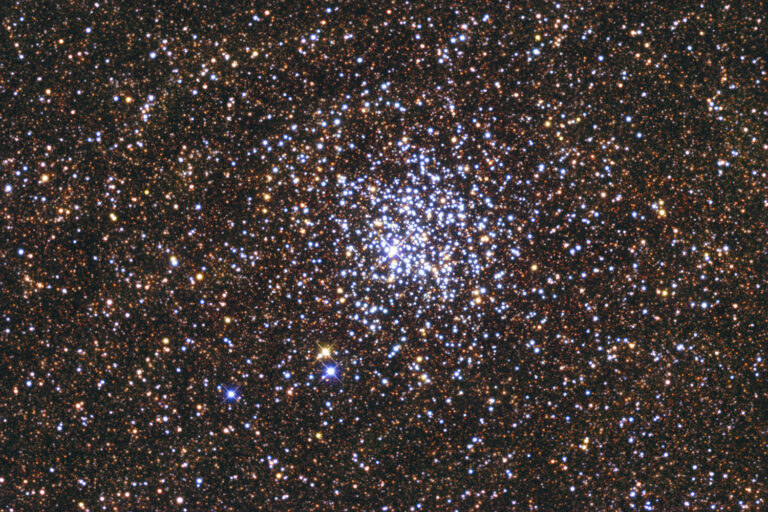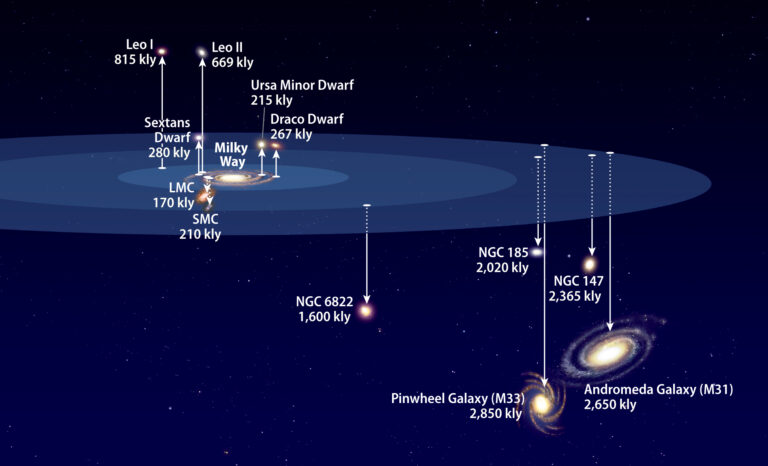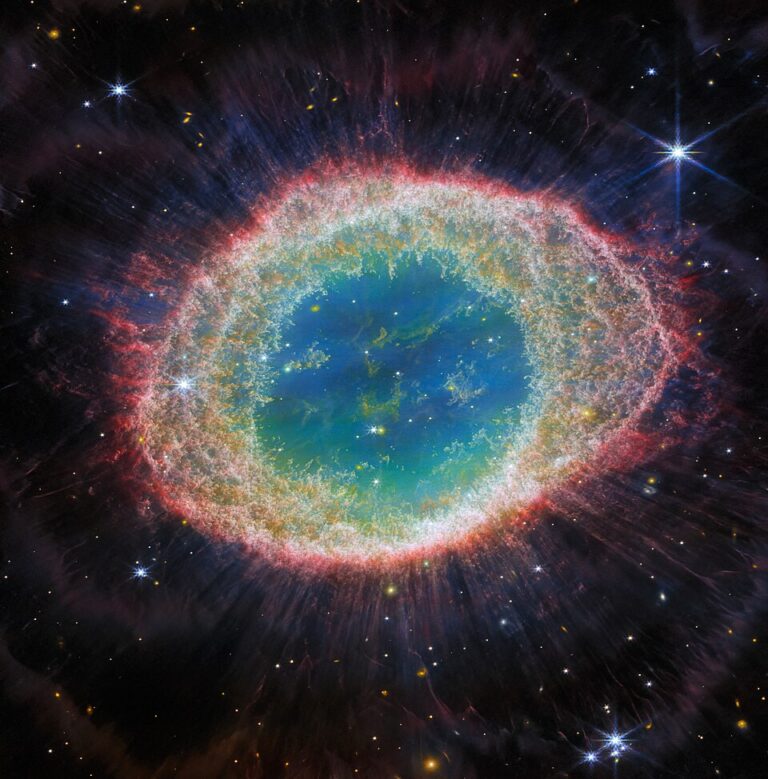Key Takeaways:
Targets for July 31–August 7, 2014
Small telescope: Omega Nebula (M17)
Small telescope: Graff’s Cluster (IC 4756)
8-inch or larger telescope: Planetary nebula IC 1295
This week’s first small-telescope target is the Omega Nebula in Sagittarius. Also known as the Swan Nebula, the Horseshoe Nebula, and the Checkmark Nebula, this object was number 17 in the catalog compiled by French comet-hunter Charles Messier. Swiss astronomer Jean-Philippe Loys de Chéseaux (1718–1751) discovered it about 1746.
To find M17, look 2.6° southwest of magnitude 4.7 Gamma (γ) Scuti. At magnitude 6.0, it’s easy to locate this emission nebula through any telescope. And it is large, measuring 20′ by 15′, which means it covers 40 percent as much area as the Full Moon.
Through a 6-inch scope, it appears as a bright bar 7′ long with a short extension from the west end to the south. Increase the magnification past 150, and the extension reveals itself as a hook-shaped feature with dark material obscuring light from its central region. Through a 12-inch or larger scope, you’ll see much more nebulosity — and the brightest regions will show fine striations.
Big and bright
This week’s second small-scope object is Graff’s Cluster, also known as open cluster IC 4756, in the “Cauda” or tail part of the constellation Serpens.
Here we have a pleasantly surprising cluster that’s a rare example of a naked-eye object with an IC (Index Catalogue) designation. It shines at magnitude 4.6. To find it, look 4.5° west-northwest of magnitude 4.6 Alya (Theta [θ] Serpentis).
IC 4756 is a widely scattered open cluster 52′ across that appears at dark observing sites as a small, bright haze near the edge of the Milky Way. Through a 4-inch telescope, you’ll see a huge, beautiful collection of 50 magnitude 9 and 10 stars. The cluster’s brightest star, magnitude 6.4 SAO 123778, sits at IC 4756’s southeast edge.
This cluster’s common name comes from German astronomer Kasimir Romauld Graff, who independently discovered it in 1922. American astronomer Solon Bailey had found it earlier on photographic plates taken at Harvard College’s Arequipa station in Peru.
Small but mighty
This week’s large-telescope target is planetary nebula IC 1295 in Scutum the Shield. You’ll find this object 4.8° east of magnitude 3.9 Alpha (α) Scuti and only 0.4° east-southeast of the magnitude 8.1 globular cluster NGC 6712.
The planetary is brighter than its listed magnitude of 11.7 would lead you to believe. The reason is IC 1295’s relatively high surface brightness. At only 86″ across, it doesn’t spread out its light far. Telescopes as small as 6 inches in diameter will show its disk shape. With a larger scope, the nebula’s irregular nature becomes more apparent.
And if you think IC 1295 is faint, consider its central star. That dim bulb glows nearly invisibly at magnitude 16.9.
Expand your observing at Astronomy.com
StarDome
Check out Astronomy.com’s interactive StarDome to see an accurate map of your sky. This tool will help you locate this week’s targets.
The Sky this Week
Get a daily digest of celestial events coming soon to a sky near you.
Observing Talk
After you listen to the podcast and try to find the objects, be sure to share your observing experience with us by leaving a comment at the blog or in the Reader Forums.

